
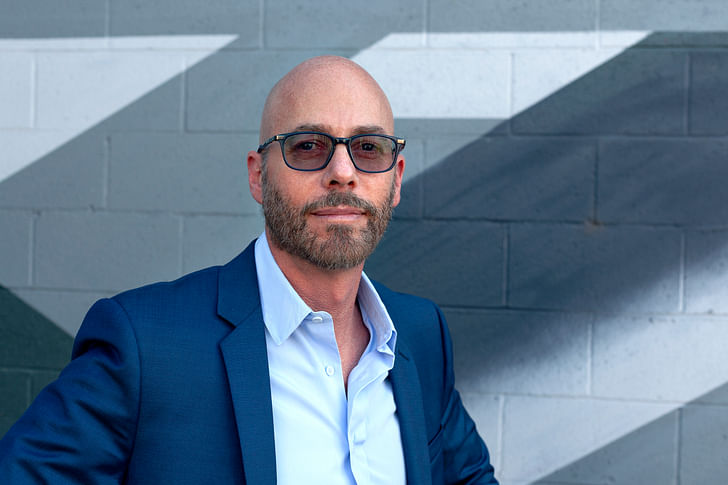
Archinect's Deans List is an interview series with the leaders of architecture schools, worldwide. The series profiles the school’s programs, pedagogical approaches, and academic goals, as defined by the dean–giving an invaluable perspective into the institution’s unique curriculum, faculty, and academic environment.
For our latest installment, and in conjunction with Archinect’s Spotlight on Los Angeles, Archinect spoke with Stephen Phillips, Director and founder of the Cal Poly Los Angeles Metropolitan Program in Architecture and Urban Design. The 30-student program offers fourth-year undergraduate students at Cal Poly San Luis Obispo “an urban experience highly suited to an advanced architecture education” that compliments SLO’s more traditionally collegiate educational offerings while also offering an integrated design curriculum that includes a 20-week internship experience at some of the city’s top architecture firms. Phillips writes: “We position our students within the profession and prepare them for thesis and graduate school intellectually, formally, and technically.”
We caught up with Phillips to discuss the program’s comprehensive approach, the necessary and vital connections between academia and practice, and the many ways in which Cal Poly LA Metro punches above its weight by harnessing its particular institutional and professional connections in Los Angeles.
For our readers who may not be familiar with the Cal Poly LA Metro program, can you briefly describe the concept behind the program and how it fits into the larger Los Angeles architecture education scene?
The Cal Poly Los Angeles Metropolitan Program in Architecture and Urban Design is an off-campus program for Cal Poly, San Luis Obispo. In Los Angeles, we offer a group of our fourth-year undergraduate Cal Poly SLO students (about 30) an urban experience highly suited to an advanced architecture education. We position our students within the profession and prepare them for thesis and graduate school intellectually, formally, and technically. We are a boutique program here within the LA community, acting somewhat as a free agent. As we are not part of a larger local administrative infrastructure and do not participate in local competitive posturing, we can be very nimble, progressive, and collegial. We are committed to the design and practice of architecture, urbanism, formalism, technology, and social politics and because of our small size we have been able to focus on educating our students in a very synergistic manner. Moreover, we are fully engaged within the local LA architecture scene, learning and sharing alongside our institutional and professional colleagues. The architecture schools here in LA are global leaders and we bring to the conversation the strengths of Cal Poly SLO’s incredible architecture school which includes our very strong and talented student body with their highly integrated education in architecture.
In Los Angeles, we offer a group of our fourth-year undergraduate Cal Poly SLO students (about 30) an urban experience highly suited to an advanced architecture education. We position our students within the profession and prepare them for thesis and graduate school intellectually, formally, and technically.
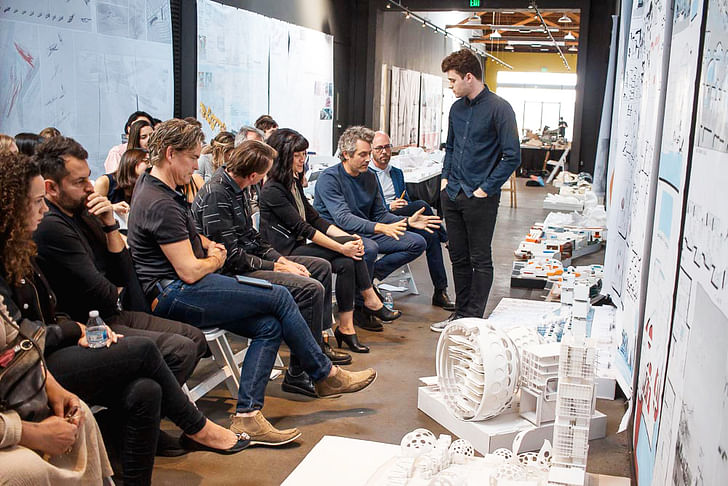
You are the director as well as the founder of the Cal Poly LA Metro program—What went into building an architecture curriculum from the ground up?
Building up an architecture program from scratch is a very rare opportunity, and we have received incredible support from our Cal Poly Deans and Chairs along the way -- R. Thomas Jones, Henri T. de Hahn, Christine Theodoropoulos and Margot McDonald. Moreover, as the Cal Poly SLO curriculum is faculty-governed, most of the decisions surrounding the program, its structure, and activities were and are made by the director within the scope of a broader understanding with our faculty as to what a Cal Poly SLO education is and what it is that we do. I won’t pretend that these past ten years have been easy; inventing and administrating this program fell almost entirely on my shoulders. We did have a model that we built upon, a similar Cal Poly SLO off-campus program in San Francisco; our programs, if similar, are however very different.
I wanted our architecture program in Los Angeles to center on studio design, alongside a major public event series, a robust internship component, and a strong history/theory and practice-oriented education
I wanted our architecture program in Los Angeles to center on studio design, alongside a major public event series, a robust internship component, and a strong history/theory and practice-oriented education. This synergistic agenda has something to do with my own background and approach to architecture in general. An architecture school, in my opinion, has to aspire to contemporaneity and push the discourse of architecture—formally, intellectually, technologically, and socio-politically. However, nothing is accomplished in a vacuum—it is important to engage the community, architecture, and the public, as well as other industries to create dialogues that make valued societal differences. To achieve these somewhat altruistic aims, we began our program by leveraging our assets – our terrific students and alumni, our comprehensive educational and professional interests, and our vast network of friendships and outside affiliations that we could tap into for support. To build up a program, it is also important to have strong ideas and interests, and to produce great work, host informative events, and get attention for what is actually happening and being produced. Ultimately, building a robust program requires having meaningful innovative concepts, the wherewithal to make them happen, and an indefatigable interest in growing, supporting, and developing a larger network. Moreover, never giving up is my motto; when one hits a roadblock, which we all do -- just keep trying to develop other routes towards one’s better intentions. I would also say, looking to others, particularly other institutions that are getting it right, and modeling their best efforts and techniques is key.
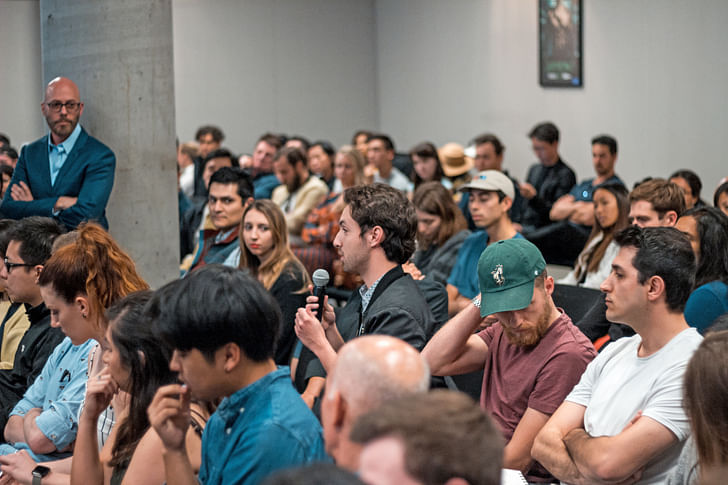
What would you consider to be your own specific pedagogical stance on architectural education?
I strongly believe in a holistic approach to architecture, landscape, and urban design that cannot be understood outside of comprehensive interests in art, design, history, theory, structures, technology, social politics, economy, and building practice. This may seem pluralistic, but it comes from a highly focused understanding of what it is we do as architects and designers and how we teach and create original research as educators. This is not to say that I am interested in a muddied form of interdisciplinarity -- specialization is extremely important and needs to be fully supported. Not everyone is interested and capable of doing everything. This is why discourse is paramount.
... specialization is extremely important and needs to be fully supported. Not everyone is interested and capable of doing everything. This is why discourse is paramount
Through communication verbal, written, formal, material – we convey meaning to each other and engage society and culture. Architecture, landscape, and urbanism perform in dialogue with not only humanity, but the natural and built environments. We have a civic responsibility to understand what we are interested in creating and how those creations affect ourselves, each other, and the world around and beyond us. I am also a technophile as much as I am artistic and conceptual; ecologically progressive technology is extremely relevant to motivating the future of the design profession and has to be supported and incorporated into a responsible architectural education.

What insights from your past professional and academic experiences do you work to integrate or adopt as the director of the program?
I received a strong liberal arts education as an undergraduate at both UC Berkeley and Yale. I was pursuing sculpture, painting, and philosophy at that time as much as I was interested in architecture; I also had a talent for math, science, and engineering. What still attracts me to architecture today, is how it incorporates so many varied disciplines in fascinating and nuanced ways. Over time, and perhaps while a graduate student in architecture at Penn and Princeton, it became clearer to me that our socio-political, economic, and cultural values are embedded in the formed materials we produce, and the organizational patterns and strategies we advance. Architecture performs in meaningful ways and it is everyone’s responsibility to try to understand what it is we create and how architecture affects lives and the environment.
As I am a professional practicing architect as much as I am an academic – I also recognize, support, and value the significant challenges engaged in the act of building
To do this requires awareness from education and discourse. As I am a professional practicing architect as much as I am an academic – I also recognize, support, and value the significant challenges engaged in the act of building. I want our students to see building design as supported and advanced by construction reality as much as it is motivated by cultural constructs. I would like students to champion the conceptual and cultural value of their designs, while also seeing building as a positive part of the complexity of the profession. Frankly, I’d like to see more design architects also take on political responsibility and governance and to understand that through planning, building, zoning, and public engagement we can make very real differences that improve not only ourselves but the natural and built environments. Policy and politics move society and the profession, and we should be more engaged in these fields as architects and designers.

You earned a PhD from Princeton University in 2008; Can you share a bit about why you decided to go for this higher level of education? How did the experience shape your conception of what it means to be an architectural educator?
I was already a licensed architect running my own practice at a young age in San Francisco when I applied to Princeton for the PhD; it was an economic boom and frankly I was doing really well. I had worked for Charles Moore, Cathy Simon, and Bill Turnbull – all great architects and I was getting things built. Yet, I really wanted to know more intellectually about architecture and similarly to Charles Moore, I wanted to model my career on an effort to synthesize theory and practice.
Architecture (as society in general) is so unnecessarily polarized and polarizing. The endless onslaught of oppositional binary thinking is undermining so much these days. Having a stance and an opinion is important, but it is unproductive when society gets reductive and makes everything about picking sides: theory versus practice; form versus social-politics; art/design versus technology/structures, etc. Nothing is so simplistic as binary thinking. As an optimist, I have great hope for the profession of architecture; I truly believe in art, design, social-politics, formalism, technology, structures, landscape, and urbanism. I also am a strong proponent of the academy and scholarship (contemporary and traditional). Going for the PhD despite the enormity of effort, and ultimately publishing a book, Elastic Architecture, by MIT Press really opened my understanding to the incredible value this level of scholarship has for producing ideas that motivate and productively challenge the profession. As an architect, with a stable practice, and as a published theorist, historian, and scholar – I have so much respect and understanding for both theory and practice and all the nuance of the in between. Architecture is difficult but enlivening and requires synergy from all of us adding our specialties and working together. We really need to learn to respect how all the varied parts of the discipline have merit, are extremely difficult, and play different roles that do prove to come together.
What kind of students do you think flourish in the program and why?
I sincerely believe all students benefit from the holistic education our program supports. Los Angeles though, doesn’t appeal to everyone. It is an extensive city that can seem overwhelming to outsiders and not everyone is comfortable living here. Our strongest students are ones with ambition, open minds, a love for learning, an interest in reading, computing, building, social and environmental concerns, and tectonics. We are a very diverse, international community at Cal Poly LA Metro and everyone can do extremely well in our program. Our students venture off to do amazing things from becoming robotics specialists at Samsung to lead architects and designers in terrific firms in Los Angeles, New York, London, Asia, etc. More and more, I’m also seeing our students becoming academics. At Cal Poly LA Metro we teach our students the skills to be really open minded and excited about education; they will have their pick of graduate schools afterwards as well as top firms practicing architecture, urbanism, and design.
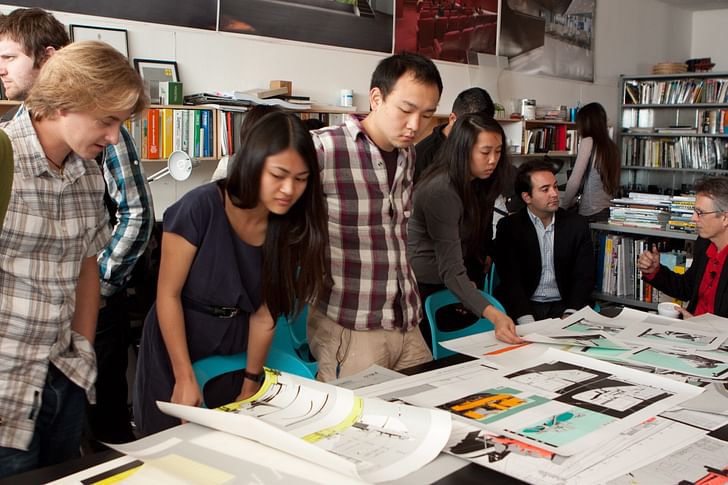
What are the biggest challenges, academically and professionally, facing architecture students today?
The costs of education have become insurmountable for too many architecture students. The academy has to show more ingenuity and be more resourceful as do architects in general. Great architecture doesn’t have to be outlandishly expensive and materialistic, nor do our educational environments. I don’t believe the most expensive glamorous environments with the best facilities should be most admired by any means. Students in architecture certainly cannot afford the debts they carry heading into the profession; the salaries to pay those debts back are simply not going to be there, except perhaps in the largest corporate firms. Education should be about dismantling classist societies, not producing them.
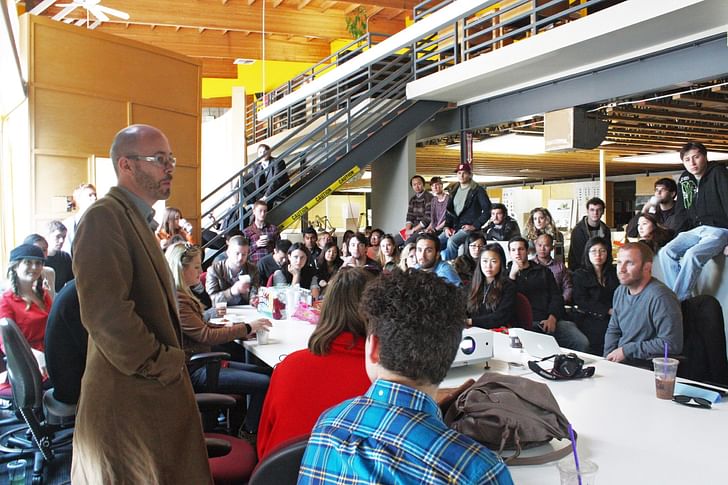
How do you draw faculty to the program? Are the positions permanent, temporary, or a mix of both?
Our program has a public presence here in Los Angeles (and beyond), through our event series, internship program, student work, and also, I suppose, through my own teaching, research, writing, and architecture practice. I believe it is important to have a voice in the community you participate in, and it is important to work together with other motivated thinkers, designers, and practitioners to move the conversations within our profession. LA is also a very small community in many ways, and we all kind of know what is happening at the varied institutions. In other words, the local community knows us here at Cal Poly LA Metro and what we do, and many people seem to be very excited about it and interested to teach with us.
Pavel Getov is a major figure here in LA who worked at Morphosis for many years and also teaches at SCI-Arc; having him teach practice and design development to our students has been amazing, and we are so very grateful. Jia Gu, Sarah Hearne, and Alex Maymind are all PhD Candidates from UCLA who contribute to the local community in so many ways publicly and professionally as historians and theoreticians. We offer them similarly to what Woodbury USC, CalPoly Pomona, and SCI-Arc do -- their first opportunities to teach while finishing their dissertations and preparing for the academic market. Erick Carcamo, Teddy Slowik, and Ismael Soto are also top-quality part-time studio design faculty that have worked with us; they also work in local offices and at other the major schools of architecture in LA. I cannot say precisely why all these terrific people are interested to teach with us at Cal Poly LA Metro; I’d like to believe it is because we are progressive, respectful, and very collegial in our administrative and teaching approach. Frankly, I think it is because our students are so fantastic to teach – bright, talented, go-getters with incredible architectural facility, acumen, skill, and humility.
Unfortunately, we do not offer tenure-track opportunities here in LA to our faculty— we do of course have these positions on the main SLO campus. Cal Poly SLO is a very collegial and supportive academic community, and it would be important for any permanent faculty here in LA to be linked to the main institution; Cal Poly LA Metro is only one piece in the puzzle of a very big and significant architecture school; one needs to know how the program pulls only part of the weight within this bigger whole.

What are some of the advantages of the school’s context—being in Los Angeles as well as being under the Cal Poly San Luis Obispo umbrella—and how do you think they help make the program unique?
Cal Poly San Luis Obispo is one of the top undergraduate professional architecture schools in the nation. The education we provide is extremely comprehensive and as a state institution we attract a wonderful group of promising young adults who are very interested to benefit from every opportunity available to them. The institution and its faculty are stellar and really give the students a solid groundwork to develop upon. With that said, our LA program gets to push the envelope as perhaps only an LA school can do. Los Angeles is a vital city with one of the strongest architecture and urbanism communities internationally; being part of this environment really opens up what is possible for us. The Cal Poly SLO students that choose to be in our LA program are certainly some of our best and brightest, and due the nature of our LA program—the public event series, internship program, and integrated studio/theory/practice set up—we have an opportunity to work with so much of what the LA scene has to offer. We collaborate with all the major architecture schools and many of the incredible professional offices and local organizations. Our students really get to experience the Los Angeles architecture community – it is very exciting.
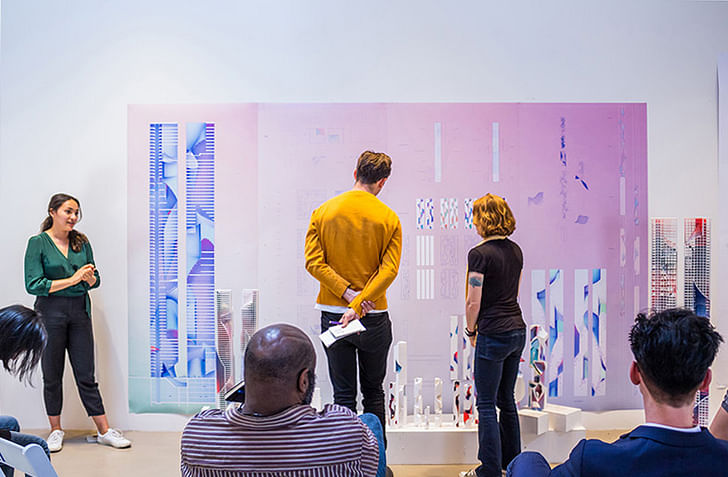
What would you like the reputation of the school to be during your tenure?
I would like to see our school admired for the robust institution we are and the quality education we afford, given we do this at, I believe, about 20% of the tuition costs of most private schools. Our Cal Poly SLO/LA students are absolutely competitive in the profession and more and more in academia, as well. Moreover, the educational opportunities our students receive are on par if not exceed most top institutions; we are definitely known for being extremely resourceful and having great ingenuity. Cal Poly LA Metro in fact is not subsidized with any State funding as it is an off-campus program. So, what we achieve with so much less than so many others should serve as a model that deserves to be recognized. Hopefully, those aware of what we do at Cal Poly SLO/LA understand the effort and difference we are making. I would also add that our Cal Poly students are not always given full credit for their incredible design and intellectual talents. I think that is because we are a polytechnic school and people simply see the root “technic” and think – oh we are a technology school that produces CAD monkeys – like that concept could even be possible in today’s architecture world. This is not fair nor is it true. The tradition of a polytechnic education is applied theory. Our institution as a whole is focused on design, theory, and its practice. Sure, our students often prove more technologically capable and practice oriented than most, but I hope that in seeing more of our student work and having opportunities to work with our alumni, the synergy of our program will become more readily apparent. I have been honored to teach students here at Cal Poly SLO/LA whose design skills are spectacular – among the best the country has to offer; top graduate schools and firms more and more fight for our students; I’d like that to continue to be the norm.

The program’s professional focus makes it unique among architectural institutions in LA, how does this focus shape the curriculum?
I believe you are referring primarily to our internship program, which is certainly unique. We also work hard, similarly as does the Cal Poly SLO campus, to integrate practice and structures into undergraduate design studio. We have a practice and structures component to design studio. Fabio Zangoli of John Labib + Associates joins us in the design studio to develop our structures alongside Pavel and Teddy. We strongly believe in an integrated approach to building design.
And yes, our internship program is robust; all our students work two-days full-time in professional offices here in LA. I’m tired of hearing from the profession that architecture schools don’t train students for the skills needed to practice. This is simply untrue; we do. But we also must recognize there are skills that can only be acquired in an office including understanding professional time management, office politics and procedures, drafting with very firm specific software/layers/detailing and conventions. Even office protocols of how and when to ask a question and who to ask first are important skills only acquired in an office. Our students learn to understand this aspect of the profession. Students often start their internship years thinking work is going to be like school (i.e. studio), and that the boss and everyone around them are there to assist their success; this is not really going to be the case. Humility and general political wherewithal are important life skills to be taught on the job. Moreover, most students commit to the profession of architecture with no idea what is office-studio culture. I’d rather students get a sense of what it is like to work in an architecture office or workshop sooner rather than later. There are so many paths to pursue within the profession; the sooner we can introduce students to the varied nature of architecture and design the better it will be for them.
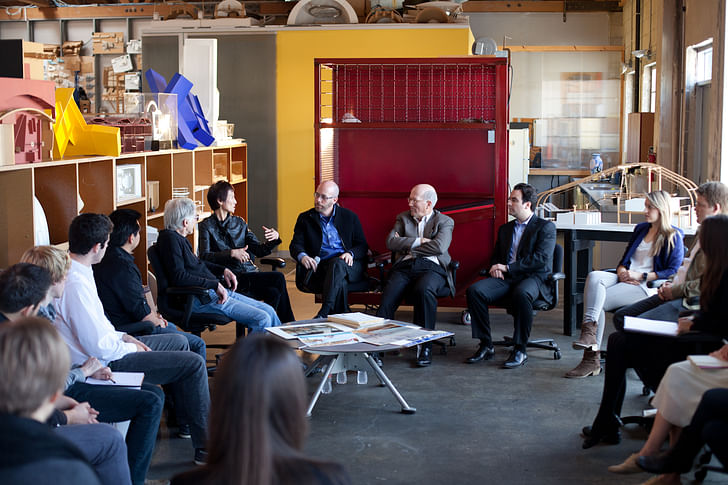
How do you strike a balance between unpaid work and work-for-credit arrangements while also instilling and perpetuating positive employment and mentorship practices for students, workers, and employers alike?
Our internship program here in LA began during the Great Recession as an opportunistic solution to a challenge both students and firms were experiencing. During the recession, firms couldn’t keep their employees as they had little work, and students weren’t getting hired as they were getting no experience. Moreover, firms were challenged to seek new work as they had no employees available to chase new work. We saw this conundrum as an opportunity due to a concurrent shift in AIA regulations that began allowing students to intern without pay for educational credit. We set our students to work in firms two-days per week for twenty weeks, and from that educational experience our students became far more employable. Our students were the ones getting the jobs during the recession (spring break, summer, and upon graduation) because they were getting the experience. Our internship program enabled these opportunities for our students, which due to the prestige of our intern offices (Morphosis, NMDA, EOM, Patrick Tighe, ACMartin, RTKL, B+U, P-A-T-T-E-R-N-S, Griffin Enright, etc.) also proved career transforming. We now have about 25 firms that intern our students consistently, who are all terrific. Moreover, as the economy has changed, about 2/3 of these are paid internships. Many of these positions are the first time students have worked in architecture offices, so we are very grateful to these offices and their willingness to take on this training responsibility; a significant number of these internships have notably led to permanent positions – so the strategy is working. I should also mention that working two-days per week is not ideal for some firms, so we now have, for example, Gehry and Morphosis Six-month Internship Fellows. Students accepted into our LA Program can compete to be awarded these fully-paid internship positions at these incredible firms that occur full-time the six months prior to attending Cal Poly LA Metro. These are amazing life changing opportunities.
So in answer to your question, I think if, as academics, we are careful, thoughtful, resourceful, and try to understand how the profession works, we can create powerfully synergistic relationships with firms that absolutely instill positive employment and mentorship partnerships. A wonderfully important benefit to these working relationships is also that the students meet alumni, employees, and interns from other LA Schools at these firms and make lasting relationships with the greater architecture community. Partners and employees of our internship firms also join us for our final and mid-reviews and speak in our public lecture series. These are all ways we develop synergy with the profession and the local community; we all benefit from such experiences.
Can you describe the LA [Ten]: Interviews on Los Angeles Architecture, 1970s-1990s student research project and how the curriculum of the program lends itself to the creation of a significant publication such as this?
I arrived in Los Angeles as a Getty Scholar (Postdoctoral Resident Fellow) back in 2009. So, my connection to the Getty Research Institute (GRI) is significant and seemed to me a great connection when it came to launching the Cal Poly LA Metro program later that next year. While at the Getty, I became friends with curators Wim de Wit and Christopher Alexander, and was invited to write an essay for their Overdrive catalog as part of their upcoming Pacific Standard Time Exhibition. I was asked to write on my developing interests in Postmodern and Deconstructivist Los Angeles architecture – a very original topic at that time. Once we launched the Cal Poly LA Metro Program – I saw an opportunity to engage our students with the local architects during the process and started working with the GRI and UCLA’s Oral History Program to produce an oral history of the LA architects since the 1970s. This oral history did not exist, in fact at that time, no one seemed to be very interested in the history of the LA School architects. With the Getty and UCLA backing us, we were able to slowly but surely get the architects involved – Neil Denari, Thom Mayne, Eric Owen Moss, Michael Rotondi, Craig Hodgetts, Ming Fung, Frederick Fisher, Wes Jones, and Coy Howard – and to not only meet with me, Wim, and Chris – but to film those meetings in their offices alongside our LA Metro students. Architects love to be filmed and recorded. We had a lot to learn to do this and it took a few years to finish the tapings – we really relied on the students so much to pull this all together. We also made an effort to film a special one-day retrospective in the Frank Israel archive at the Getty with Annie Chu, Joe Day, Steven Shortridge, Barbara Callas, and Mitchell de Jarnett.
Of course, LA is a fast-paced city, and just as we completed our oral histories, Eric Owen Moss at SCI-Arc teamed up with the Getty as well to showcase Thom Mayne’s first SCI-Arc Architecture Gallery and this topic of LA 1970s architecture, in general. It became clear what we were doing mattered and if we didn’t complete the work, someone else would. So, we worked quickly in our History/Theory course at Cal Poly LA Metro to produce a book; this was a lot of fun. Our students designed the cover, formatted the book, edited the stories, and we coordinated the photographs and images, all in InDesign. The students wrote papers on the architects, as well, to understand and develop the history surrounding these canonical figures, and they also drew axonometric analytic drawings. All in all, it was a great experience. We produced a PDF of the book – sent it out to ACTAR and Lar Müller Publishers – they both wanted it, but Lars offered to assist us to design and edit the book; we worked with his team to produce and publish the book. Then we used our event series and publicity network to push it out into the public realm – super fun.
On a last note: Our event series is really an important and central part of our program that cannot be underestimated. These oral histories were produced as seminar events that were integral to our program. The book became the center of our History/Theory/Criticism curriculum for a few years that helped us to focus research and writing on LA architecture. Our event series then also provided a venue to bring important and current voices to speak to our students. It was and still is a way to stay current and contemporary. We also have since made it more and more of a public space where we can engage Los Angeles openly – its art, theory, and architecture community. We now have held lectures, events, and symposiums at the LACMA, the A+D Museum, Hennessy + Ingalls, Storefront for Art and Architecture, and most consistently the Helms District Design Center in Culver City. Having active partners outside our own institutional community is hugely important to staying engaged and engaging. It is also an important space for garnering support and sponsorship. Public events and the publicity surrounding them has assisted us to develop stronger sponsor relationships that now go into providing student scholarships, high-school outreach programs, student awards, etc. We are very grateful for our sponsors: HMC Designing Futures Foundation, Morphosis Architects, AVRP Studios, AC Martin, Bulthaup, Theatre DNA, CO Architects, ARC Reprographics, among many others. Archinect, KCRW, and the LA|AIA have also proven a great source of media support for our program, as well. Our most recent Housing LA/SF Building Matters Symposium at Emerson College with Thom Mayne, Stanley Saitowitz, Julie Eizenberg, Anne Fourgeron, Neil Denari, and David Baker on Housing Innovation was a major public event that garnered us significant local attention, as we are now seeing happening with A+D Museum’s most recent The Los Angeles Schools exhibition. The past ten years has been a slow journey in terms of getting seen and becoming known for what we are creating here in LA, yet has also been so very exciting.
Antonio is a Los Angeles-based writer, designer, and preservationist. He completed the M.Arch I and Master of Preservation Studies programs at Tulane University in 2014, and earned a Bachelor of Arts in Architecture from Washington University in St. Louis in 2010. Antonio has written extensively ...
2 Comments
I'm guessing you mean "complementing" not "complimenting". It's a small typo, but there is a difference. We shouldn't risk forgetting that difference, especially in a context where practice based research could easily slide into rigorous marketing. A contribution is complementary when completes (or balances) something.
Yes, you're right, the title has been corrected
Block this user
Are you sure you want to block this user and hide all related comments throughout the site?
Archinect
This is your first comment on Archinect. Your comment will be visible once approved.